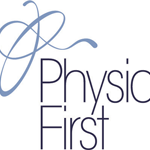PATELLAR TENDONITIS
Welcome to Hart Physio’s patient resource about Patellar Tendonitis.
Alignment or overuse problems of the knee structures can lead to strain, irritation, and/or injury. This produces pain, weakness, and swelling of the knee joint. Patellar tendonitis (also known as jumper’s knee) is a common overuse condition associated with running, repeated jumping and landing, and kicking.
This guide will help you understand:
- what parts of the knee are involved
- how the problem develops
- how doctors diagnose the condition
- what treatment options are available
ANATOMY
What parts of the knee are involved?
The patella (kneecap) is the moveable bone on the front of the knee. This unique bone is wrapped inside a tendon that connects the large muscles on the front of the thigh, the quadriceps muscles, to the lower leg.
The large quadriceps muscle ends in a tendon that inserts into a bony bump at the top of the tibia, the tibial tuberosity. The tendon together with the patella is called the quadriceps mechanism. Though we think of it as a single device, the quadriceps mechanism has two separate tendons, the quadriceps tendon on top of the patella and the patellar tendon below the patella. The muscle action causes the knee to straighten. The patella acts like a fulcrum to increase the force of the quadriceps muscles. The long bones of the femur  and the tibia act as lever arms, placing force or load on the knee joint and surrounding soft tissues. The amount of load can be quite significant. For example, the joint reaction forces of the lower extremity (including the knee) are two to three times the body weight during walking and up to five times the body weight when running.
and the tibia act as lever arms, placing force or load on the knee joint and surrounding soft tissues. The amount of load can be quite significant. For example, the joint reaction forces of the lower extremity (including the knee) are two to three times the body weight during walking and up to five times the body weight when running.
CAUSES
What causes this problem?
- Running, jumping and repetitive movements from knee flexion to extension such as squatting.
- Extrinsic factors – Inappropriate footwear, training techniques errors for example advancing the training programme too quickly.
- Intrinsic factors – flexibility, age, hypermobility, muscle imbalance or biomechanical factors can create uneven loading of the leg.
Any muscle imbalance of the lower extremity from the hip down to the toes can impact the quadriceps muscle and affect the joint. Individuals who are overweight may have added issues with load and muscle imbalance leading to patellar tendonitis. Strength of the patellar tendon is in direct proportion to the number, size, and orientation of the collagen fibers that make up the tendon. Overuse is simply a mismatch between the load or stress on the tendon and the ability of that tendon to distribute the force. If the forces placed on the tendon are greater than the strength of the structure, then injury can occur. Repeated microtrauma at the muscle-tendon junction may overcome the tendon’s ability to heal itself. Tissue breakdown occurs, often triggering an inflammatory response that leads to tendonitis.
Chronic tendonitis is really a problem called tendonosis. Inflammation is not present. Instead, degeneration and/or scarring of the tendon has developed. Chronic tendon injuries are much more common in older athletes (30 to 50 years old).
SYMPTOMS
What does the condition feel like?
- Pain is located just below the patella and is aggravated when the knee is loaded and/or during kneeling.
- There may be swelling in and around the patellar tendon with local soreness.
- Can often prevent participation in sport.
DIAGNOSIS
When you first visit Hart Physio, diagnosis begins with a complete history of your knee problem followed by an examination of the knee, including the patella. There is usually tenderness with palpation of the inflamed tissues at the insertion of the tendon into the bone. We will assess your knee for range of motion, strength, flexibility and joint stability.
Our Physiotherapist will look for intrinsic and extrinsic factors affecting the knee (especially sudden changes in training habits). Potential problems with lower extremity alignment are identified. We will also check the hamstrings for signs of weakness and tightness.
OUR TREATMENT
What treatment options are available?
Patellar tendonitis is usually self-limiting. That means the condition will resolve with relative rest, activity modification, and Physiotherapy. Recurrence of the problem is common for patients who fail to let the patellar tendon recover fully before resuming training or other aggravating activities. The aim of treatment is to calm pain and inflammation, to correct muscle imbalances, and to improve the function of the quadriceps mechanism.
Treatment includes:
- Decreasing inflammation with ice, relative rest and anti-inflammatory medication. This is achieved through ice massage, and ultrasound to limit pain and control swelling.
- A steady re-introduction to activity as pain allows.
- Flexibility and stabilising exercises to correct any muscle imbalances.
 Taping can also help to offload the patellar tendon and reduce any torsion stresses around the knee cap.
Taping can also help to offload the patellar tendon and reduce any torsion stresses around the knee cap.
- Injury prevention through education and training advice
SURGERY
Surgery is rarely needed when a wide range of protective measures, relative rest, ice, support, and rehab are used. If nonsurgical treatment fails to improve your condition, then surgery may be suggested. Surgery is designed to stimulate healing through revascularization (restoring blood supply). Weak, damaged tissue is removed and the injured tendon is repaired. Physiotherapy is vital following any surgery to optimise your recovery.




